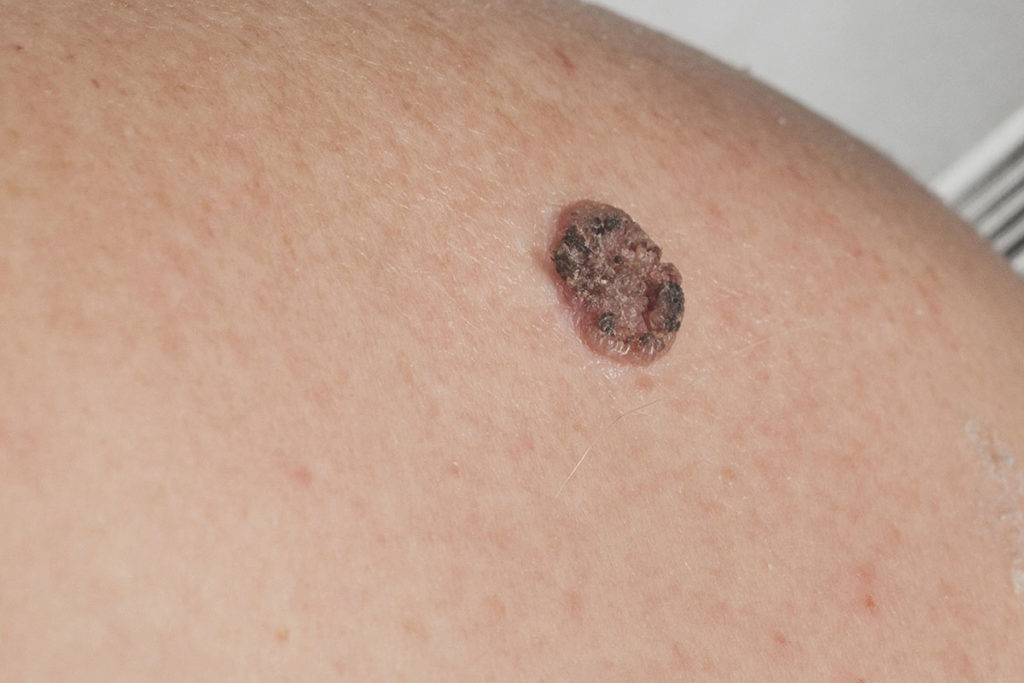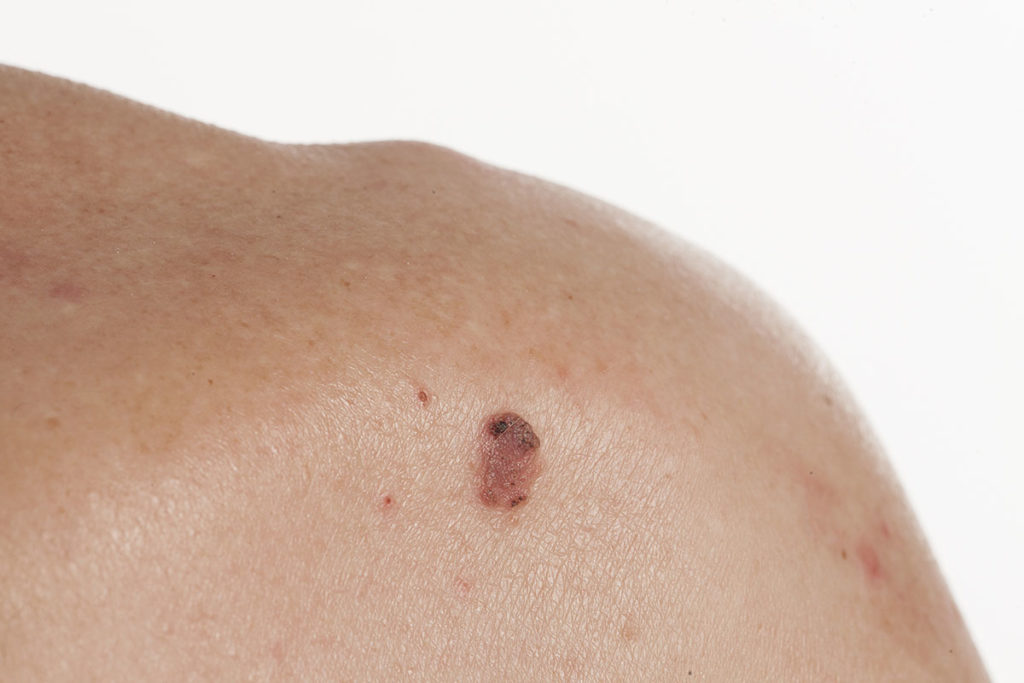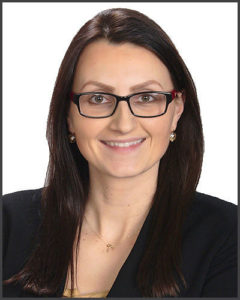Skin Cancer Awareness
Along with the American Academy of Dermatology, we encourage you to #PracticeSafeSun, this month and year-round to keep your skin happy and healthy.
Did you know that skin cancer is the most common form of cancer in the United States? According to the American Academy of Dermatology, there are an estimated 9,500 people in the United States that are diagnosed with a form of skin cancer every day, and it is approximated that one in five Americans will develop skin cancer in their lifetime.
Though highly treatable when detected early, Melanoma is the most serious form of skin cancer. There are two other common types of (non-melanoma) skin cancers, which affect upwards of 3 million Americans. These types of skin cancer include basal cell carcinoma (BCC) and squamous cell carcinoma (SCC).
Christina Avilina, PA-C at GoldinSkin Dermatology, shared some clinical insight and additional information on non-melanoma skin cancers.
What are the types of non-melanoma skin cancer?
The two most common types of non-melanoma skin cancers are basal cell carcinoma, and squamous cell carcinoma.
Basal cell carcinoma (BCC)
Basal cell carcinoma (BCC) is the most common form of skin cancer. It arises from an abnormal, uncontrolled growth of basal cells within the outer most layer of skin. BCCs grow slowly, therefore they tend to be the most are curable and cause minimal damage when detected and treated early.
Squamous cell carcinoma (SCC)
Squamous cell carcinoma (SCC) is the second most common type of skin cancer, we characterize this by abnormal, accelerated growth of squamous cells. When caught early, most SCCs are curable.
What causes skin cancer?
Skin cancer is often caused by exposure to Ultraviolet (UV) light from the sun, especially when skin becomes sunburned. UV light damages the DNA (genetic material) within our skin cells. The damaging effects due to sun exposure build over time. The more you are exposed to the sun (or tanning beds), the greater your risk of getting skin cancer. That is why it is extremely important, to protect their skin when outside in the sun, regardless of skin tone.
What are the signs of skin cancer?
Basal cell carcinomas often resemble open sores, red patches, pink growths, shiny bumps, or scars, with slightly elevated rolled edges or central indentation. At times BCCs may ooze, crust, itch, or bleed.
In patients with darker skin tones, about half of BCCs are pigmented (meaning brown in color.)


Squamous cell carcinomas can appear as scaly red patches, open sores, rough, thickened or wart-like skin, or raised growths with a central depression. SCCs may crust over, itch, or bleed. SCCs can occur in other areas of the body, including the genitals.
Who gets skin cancer and what are the risk factors?
Anyone can develop skin cancer, though it most commonly affects individuals with lighter skin tones that burn easily in the sun. Though harmful UV rays cause skin cancer, skin cancers can appear anywhere on the body, including places that are not exposed to the sun.
Additional risk factors that increase the likelihood of developing skin cancer include:
- Personal or family history of skin cancer
- Excessive sun exposure or the use of tanning beds
- Certain antibiotics or hormones may make your skin more sensitive and therefore more prone to sun damage
- Medicines or medical conditions (such as HIV) that suppress the immune system may make you more likely to develop skin cancer
- Having moles, scars, skin ulcers, or precancerous lesions (known as Actinic Keratosis)
What type of treatment options are available for skin cancer?
The majority of patients who are diagnosed with non-melanoma skin cancers are often treated with one, or a combination of the following:
- Surgery – Outpatient surgery is the most common treatment, (especially BCCs and SCCs) to remove or destroy the cancer. There are different types of surgeries that may be performed depending on skin cancer location, type, and other various factors.
- Radiation therapy – Radiation therapy kills cancer cells through high energy rays. It is used on patients who have large tumor(s), or when the skin cancer is located on an area of skin that makes surgery difficult.
- Skin creams – We may prescribe a strong topical cream to be applied directly on to the skin cancer.
- Photodynamic therapy (PDT) – Photodynamic therapy also known as PDT, is a two-part treatment therapy that helps destroy cancerous and pre-cancerous cells that form on the skin. This treatment uses a drug that is activated by a special light.
What can I do to in order to stay on top of my skin health?
There are a few best practices that you can put into place as part of your routine to lessen your likelihood of developing skin cancer.
- Stay out of the sun (or seek shade) when possible, between the hours of 10:00 AM – 4:00 PM.
- Wear SPF 50+ when outdoors year-round, and reapply it every 2 hours or immediately after swimming or sweating
- Wear a wide-brimmed hat, long-sleeved shirt, or long pants when outdoors
- Avoid tanning beds
- Schedule regular full body skin exams!
It is very important to schedule regular full body skin exams with us. The greater your risk of skin cancer, the more often you should be seen to make sure nothing has changed with your skin. We will discuss the necessary frequency of your skin exams with you during your appointment! Everyone’s skin is different and early detection is the key to successful treatment of skin cancer.
Reference
American Academy of Dermatology ‘Skin Cancer’
aad.org/media/stats-skin-cancer accessed April 30, 2021
About Christina Avilina, PA-C
GoldinSkin Dermatology

Christina Avilina completed her Physician Assistant training in August of 2017 with a master’s degree in Physician Assistant Studies at Idaho State University in Pocatello, Idaho.
She then joined GoldinSkin Dermatology in October of 2017.
Christina evaluates and treats patients, prescribes medications, and performs procedures as part of the GoldinSkin Dermatology team. Christina specializes in the diagnosis of dysplastic nevi and skin cancers using dermoscopy and has a special interest in cosmetic treatments including filler, neurotoxin, microneedling, and dermal infusion (DiamondGlow).
Christina was born in Minsk, Belarus and immigrated to the United States when she was 9 years old. In 2010, she earned a bachelor’s degree in Marketing from Lewis University in Romeoville, IL, where she also played for the Women’s Volleyball team. She spent the next 3 years working as a Pharmaceutical Sales Representative for Boehringer-Ingelheim, promoting and educating providers about medications for cardiac and pulmonary conditions and diabetes. Prior to beginning her Physician Assistant training, she worked as a medical scribe while completing her science prerequisite courses.
Christina’s personal interests include tennis, volleyball, cooking, and home improvement projects. She also enjoys spending time in nature. She is a native Russian speaker and also speaks conversational Spanish.
She is a member of the American Association of Physician Assistants and the Illinois Society of Dermatology Physician Assistants.
Click here to schedule an appointment with Christina or call (847) 677-2080.

